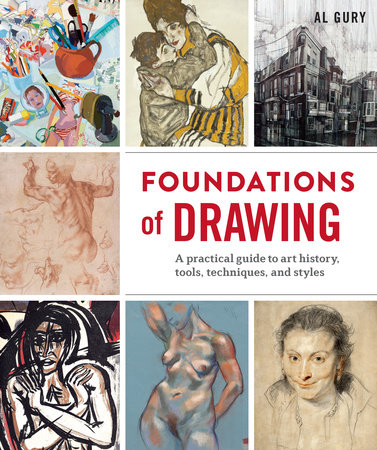Excerpt
Foundations of Drawing
INTRODUCTION
Foundations of Drawing is a guide for teachers, students, artists, and the general reader to the traditions and practice of drawing in Western culture. This overview of the history of drawing and of drawing materials, concepts, and techniques provides a practical look at the art of drawing and will be a useful text for anyone who is interested in learning about drawing, returning to drawing, studying drawing, or teaching drawing as well as for longtime practitioners of the art. The book takes the point of view that clear information on the history, materials, and techniques of drawing creates the ability to understand drawing, make choices, and chart one’s development in drawing with a sense of confidence.
Foundations of Drawing focuses on classic drawing mediums such as pencil and charcoal while also presenting an overview of a broad range of other materials, including chalk and oil pastels, watercolors, and acrylics. Not all materials are discussed in depth, but the essential ones are presented. Traditional materials and methods are illustrated through examples of old master and contemporary drawings as well as through demonstrations of basic concepts. The essential elements and concepts of core drawing genres—still life, interiors, portraiture, life drawing, and landscape—are presented for foundational drawing study and portfolio-making. More experienced artists can use
Foundations of Drawing as a sourcebook and a point of departure for further personal growth and artistic exploration.
Drawing is an essential part of a portfolio for art school admittance. Drawing shows whether or not the applicant has a basic ability to understand visual organization and use the formal principals of shape, form, line, light, and perspective. It also shows whether or not the applicant can visualize creative ideas and concepts.
What Is Drawing?
For many centuries, drawing has been a practical approach to visualizing and planning everything from human figures in an oil painting to designing machine parts, buildings, and textiles. Simple materials such as graphite pencils, charcoal, and ink have been the primary means for doing the great majority of drawings.
The term
drawing now encompasses a wide range of traditional and nontraditional mediums, approaches, and aesthetics. Modern technology has created new versions of old materials and has sometimes even replaced them. For example, fine-point marker pens have added to or replaced older dip pens and ink bottles for some artists. Some artists rely on and cherish traditional materials and methods, while others draw only on computer screens. And some artists draw experimentally using materials their Renaissance ancestors would think very strange: blood, tar, food, and computer drawing pads.
Also, the aesthetics of drawing, which traditionally focused on a figure, an object, or a scene, now include abstract and conceptual forms having little to do with nature and more to do with how the artist personally interprets the world. Once thought of as the province of trained artists or skilled amateurs, drawing is now recognized as part of the language of children, the mentally disabled, and self-taught or outsider artists. Prisoners and victims of social injustice draw in order to document their social and political experiences.




